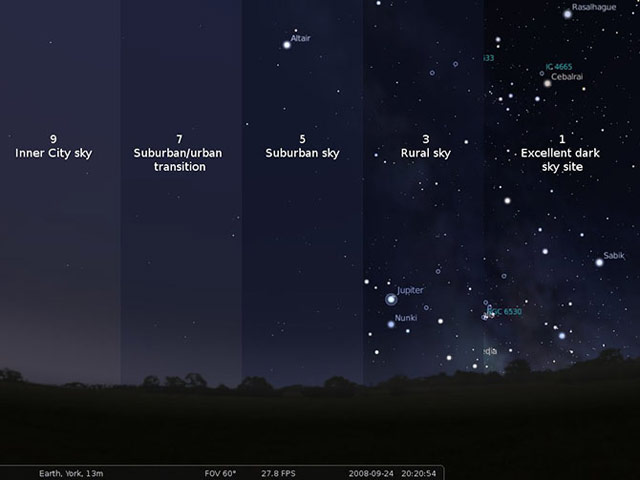The Night Light
Paul Bogard recently published a book on darkness called The End of Night. Nicola Twilley and Geoff Manaugh interviewed Bogard about the book, the night sky, astronomy, security, cities, and prisons, among other things. The interview is interesting throughout but one of my favorite things is this illustration of the Bortle scale.

Twilley: It’s astonishing to read the description of a Bortle Class 1, where the Milky Way is actually capable of casting shadows!
Bogard: It is. There’s a statistic that I quote, which is that eight of every ten kids born in the United States today will never experience a sky dark enough to see the Milky Way. The Milky Way becomes visible at 3 or 4 on the Bortle scale. That’s not even down to a 1. One is pretty stringent. I’ve been in some really dark places that might not have qualified as a 1, just because there was a glow of a city way off in the distance, on the horizon. You can’t have any signs of artificial light to qualify as a Bortle Class 1.
A Bortle Class 1 is so dark that it’s bright. That’s the great thing-the darker it gets, if it’s clear, the brighter the night is. That’s something we never see either, because it’s so artificially bright in all the places we live. We never see the natural light of the night sky.
I can also recommend reading David Owen’s 2007 NYer piece on light pollution.





Stay Connected